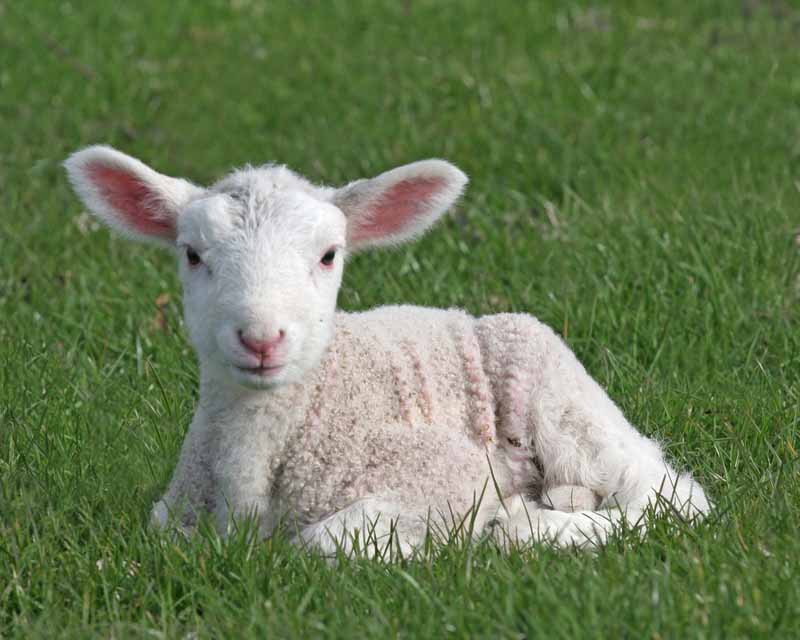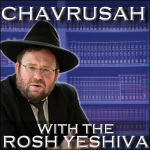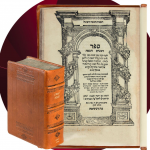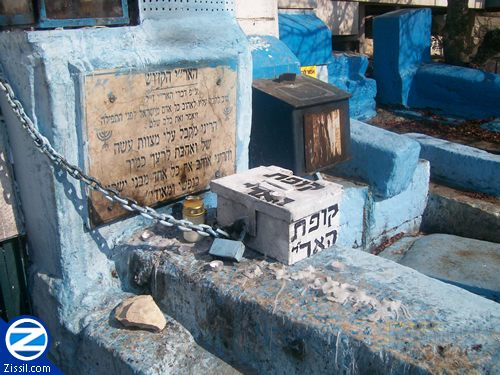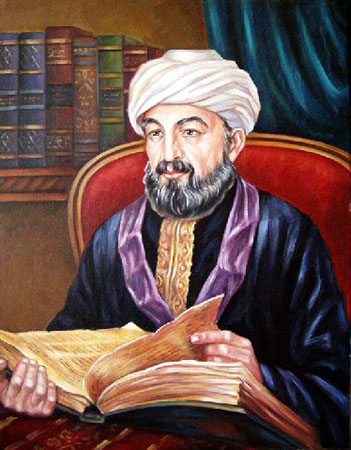
Click here to download PDF
What is Nirtzah about?
The final phase of the Seder is called “Nirtzah” and it’s a very difficult phase to understand. The Seder per se has finished with the mitzvah of Hallel and we already officially closed the Seder with “Chasal Sidur Pesach”. Then comes another phase called “Nirtzah”- desired. The meforshim explain that it means: “if you have done the Seder and executed it correctly, you are desired by Heaven”. Isn’t this true of any mitzvah we do correctly? Once it’s been done properly, are we not desired by Heaven? Why is Seder Leil Pesach different from all other Mitzvos?
Why is this Seder different?
The answer lays in why Seder night is called the “Seder”- the order. Every Mitzvah that has any hint of complexity to it will be called a “Seder”, like “Seder Eruv Tavshilin”. What makes “Seder Leil Pesach” different from all the other “Sedarim”?
As we have explained in the past, destiny really gets going with Yetzias Mitzrayim. Prior to that, the world was going nowhere. The Avos received promises for the future, but the promises are only fulfilled in actuality from Yetzias Mitzrayim and onwards. The entire pattern that the world is following to go from potential to actual is the secret of what Chazal say, “in every generation a man should see himself as if he himself left Mitzrayim”! Every generation is adding details within the framework of the script that was set in motion with Yetzias Mitzrayim. It’s not a coincidence that in the “HaRachamans” at the end of bentching on Seder night, we reference Olam Haba. Yetzias Mitzrayim initiated the pattern of destiny of going from this world as we know it, to higher levels of refinement and Divine Revelation culminating with Olam Haba.
The Long run of Destiny
After we’ve reconnected to the cosmic “Seder”- order that came into the world with Pesach, we’ve renewed our connection and commitment to being the main players in the game of destiny. The word “Nirtzah” comes from the root “Ratzon” which means “will” or “desire”. My Rebbe Maran HaGaon HaRav Moshe Shapira ZT”L taught us that there’s an even more basic root to “Ratzon” – it is “Ratz”- to run. Running towards what you “desire” shows that you really want it. In light of this observation, the REAL definition of “Ratzon” is “DRIVE”. When we’ve reconnected to the “Seder”, we’ve not just renewed our desire for Hashem and Hashem’s Desire for us, but above all we affirm that we are in this for the “LONG RUN” of destiny. “Moshcheini” – pull me “Acharecha Narutza”- after you I will RUN (Shir HaShirim).The theme of Shir HaShirim is the eternal love story between the Jewish people and Hashem that stretches across all time. That’s why it’s customary to say Shir HaShirim after the conclusion of “Nirtzah”. Because of the mutual desire between Hashem and us that went into effect by Yetzias Mitzrayim, we’re in it together for the long run of destiny. All the ‘Piyutim’ of “Nirtza” have to do with history and destiny; whether it’s all the events that happened at night in course of time, or the events that happened on Pesach in course of time. Then we hit the high point and reveal the very fundaments of how destiny is constructed; with numbers and concepts. These are the meanings behind Echad Miyodeah and Chad Gadya.
Echad Mi Yodeah
“Numbers” are foundational concepts necessary to build any algorithm, formula, or plan of action, as is well known. If the numbers are all for Hashem, the Torah, and the Jewish people, that means that all the building blocks of destiny are already stacked to work for Hashem, the Torah and the Jewish people. That’s the secret that it starts from “One” which is Hashem and ends in “13” which are Hashem’s attributes with which He displays His omnipotence by having unconditional mercy on the Jewish people. 13 is the same numerical value as the word “Echad” – which means “ONE”. My Rebbe Maran HaGaon HaRav Moshe Shapira ZT”L explained that we are in a loop that goes from 1 to 13. Chazal tell us before Hashem created physical reality that “He and His Name him were one” and in the future, “On that day Hashem will be one and His Name one”. All of destiny is sandwiched in between these concepts and all other numbers are just branches of these elemental building blocks of 1 to 13. [In the depth of it, the “One” is parallel to “Hashem is One and the “13” are attributes of mercy, as we know Hashem’s Divine Names are parallel to the attributes, and refers to “His Name is ECHA”D”].
Why History Repeats itself
Why does history repeat itself? Hashem created everything, including the range of possibilities. There are only certain types of failures and setbacks possible. For every type of failure Hashem created, He also created the types of remedies needed to fix them. Hashem also created the potential to progress to higher levels. Hashem created all the possibilities and the role of our free will is to choose amongst the options Hashem created. That’s why “history repeats itself”: in every generation the wicked are choosing from the range of possibilities for failures and wrongdoings that are available during that generation, which are in set categories since creation. The same is true of the remedies and advancements of the Tzadikim – they are choosing from the possibilities available to them in their times, which are in set categories since creation. This is the secret that “in every generation and generation a person must see himself as if he himself left Egypt” – the advancement of destiny is to play out the details that are all implicit in the principles that were set in motion at the time of Yetzias Mitzrayim.
Chad Gadya – The Destiny Codes
The Piyut of “Chad Gadya” is a metaphor for destiny. The different characters of the narrative are different types of events in destiny. Commentaries may differ in “pinpointing” the specific events in destiny that the characters represent, but they aren’t mutually exclusive. Because those different events in destiny belong to the same category, whether it’s the category of the “cat” or the category of the “ox”, as we will demonstrate.
One Goat One Goat
The kid goat represents the Jewish people. The literal translation of the Hebrew word for goat is “Ez”, which also means brazen, as Chazal say that the Jewish people are the most brazen of the nations, if not for the Torah that calmed and refined them. Goats are also a part of what’s called “Tzon” – flock and we are the flock that follows Hashem, as is often the metaphor for the Jewish people in Tanach. The reason why it is said repetitively, “one goat, one goat” is because we have just one love, to Hashem but it expresses itself in a duality of the Mitzvos Aseh and the Mitzvos Lo Saaseh. Other commentaries say it refers to the two Dibros of Anochi Hashem and Lo Yiheh Lecha, which we heard directly from Hashem, even though they are two Dibros, they still represent having only one love, “Anochi Hashem” is to love Hashem and “Lo yiheh lecha”, is to love none other. Others say that one goat, one goat are the two goats that Yaakov prepared for Yitzchak to get the brachos out of him and push Eisav out. Two goats but for the singular purpose of being the one chosen people. Others say that it refers to the two goats brought on Yom Kippur, the one that is sacrificed to Hashem and the one that is thrown to the Azazel. One represents the closeness that we have to Hashem and the other one represents that we reject whatever we have done wrong. Two goats, one love.
Father & Two Zuz
“That father bought for two Zuz” – all commentaries agree that the father is Hashem. The two Zuz represents the acquisition that made us His. It doesn’t necessarily mean that the two Zuz were from His money. Some say the two Zuz represents the “Machazit HaShekel” with which we have the Divine service which makes us close to Hashem, as the word “Korban” – sacrifice is from the root, “Karov”, close. Others say it is the two Zuz of declaring “Naaseh” and “Nishmah” and others say the two Zuz represent the two Mitzvos Hashem gave us to make us worthy of redemption from Egypt, which is what made us His nation; the Korban Pesach and the Bris Milah.
The Cat
The Gemorah in Horiyos says that the cat does not acknowledge his master. Therefore, most commentaries understand that the “cat” is Pharoah who did not know Yosef, who Made Egypt Great A long time ago and subsequently when Moshe came to demand that he release the Jewish people, Pharaoh said, “I do not know Hashem”. Others have said that the cat refers to the sin of selling Yosef since Yosef rotted in jail for an additional two years because the minister of drink did not acknowledge him and forgot him. The brothers also lost sight of their brotherhood and how Yaakov would react and furthermore, they actually slaughtered a goat (like the cat) and dipped Yosef’s coat in it to make the ruse as if Yosef was mauled by an animal. These opinions are not mutually exclusive because it is the sin of the sale of Yosef that brought about the events that brought us to Golus Mitzrayim.
The Dog
The dog according to most commentaries represents Amalek. This is based on a Zohar and also a Chazal brought by Rashi in Parshas Beshalach. According to those who align the cat with the sale of Yosef, the dog represents Pharaoh who bit the tribes who were guilty of the sale of Yosef.
The Stick
The stick refers to the staff of Moshe which is consistent with all the different opinions because the staff of Moshe defeated both Amalek and Phaorah. The staff of Moshe is a branch of the “Eitz HaDaas” and Moshe gripping it means that we take control of the setback of the “Eitz HaDaas” which caused the nations of the world to come into being. Moshe gripping the staff means destruction to our enemies. When he loses his grip on the staff, it becomes a snake representing the power of the Eitz HaDaaas out of control morphing into the snake that caused the sin in the first place.
The Fire
The fire represents the most destructive force in reality, the sin of Avoda Zara. Most commentaries see this alluding to the sin of the Golden Calf where it says, “Ahron threw the gold into the fire” and from that the Golden Calf emerged. It ‘burned the stick’ refers to how it set back all the achievements of the staff of Moshe. The sin of the Golden Calf made us vulnerable for all generations setting back the protection that the staff of Moshe gave us. But it goes deeper than that, Moshe’s grip on his staff represents taking control over the “Eitz HaDaas” and reclaiming all that it stole from us, most notably immortality. Chazal tell us that at Sinai, the contamination of the “Eitz HaDaas” ceased and we were immortal. But the sin of the Golden Calf restored our mortality and the internal Yetzer Hara and all weaknesses of the flesh.
The Water
The water that extinguished the fire represents the achievements of Moshe who was “drawn from the water”. After the sin of the Golden Calf, he prayed for us to be spared and forgiven. An outpouring of prayer is likened to water, as the Possuk says, “spill like water your heart before Hashem” (Eicha). He also put us through a repentance ritual which involved burning and grinding the Golden Calf and putting the pulverized ashes in the water, which we were forced to drink and that helped atone for the sin. Above all, he fought for us to still get the Torah which is likened to water and fixes everything.
The Ox
The ox that drank the water refers to how sadly the Jewish people reverted to serving Avoda Zara. Most commentaries say that it is most alluding to the golden calves that Yeravam set up and forced the Jews to serve. Some commentaries see it as an allusion to how the Greeks tried to sever our connection to Hashem by forcing us to engrave on the horn of an ox, “we have no portion in the Lord of Israel”. The common denominator is that these are instances that severed our connection to Hashem that were painstakingly rebuilt after the sin of the Golden Calf in the desert.
The Shochet
The Shochet who slaughtered the ox represents the Anshei Knesses HaG’dola who vanquished the Yetzer Hora for Avoada Zara once and for all. According to those who see in the Ox an allusion to the Greeks that tried to secularize us (as opposed to Avoda Zara), the Shochet can represent the Chashmonaim and the Tikkun of Chanukah that is lasting us until this day.
The Angel of Death
The Angel of Death refers to Sinas Chinam – baseless hatred between Jews. It caused a great deal of bloodshed in its own time and throughout the ages but worse than that, it severed our connection with the Divine presence which is like national death and threw us into this long and bitter exile that has yet to end. There are those who say that the Angel of Death refers to Titus who killed countless Jews and destroyed the second Beis HaMikdosh. This is no contradiction to what we just wrote because, as is well known, the sin of Sinas Chinam is what sealed our fate and empowered Titus to wreak all the havoc that he did culminating with the destruction of the second Beis HaMikdosh built by the Anshei Knesses HaG’dola and re-inaugurated by the Chashmonaim.
HaKadosh Baruch Hu
As is well known, Chazal teach us the “Yetzer Hara is the Satan who is the Angel of Death”. Hakadosh Baruch Hu slaughtering the Angel of Death represents vanquishing all evil. This is to go full circle back to Pesach as that is what the vanquishing of Chametz represents and it’s what we pray for when we burn our Chametz. But when the Yetzer Hara is removed from reality, there will be no wrong doing not between us and Hashem and not between us and our fellow man. That will be the great day of world peace and “the world will be filled with knowledge of Hashem”, may it be speedily in our days.

